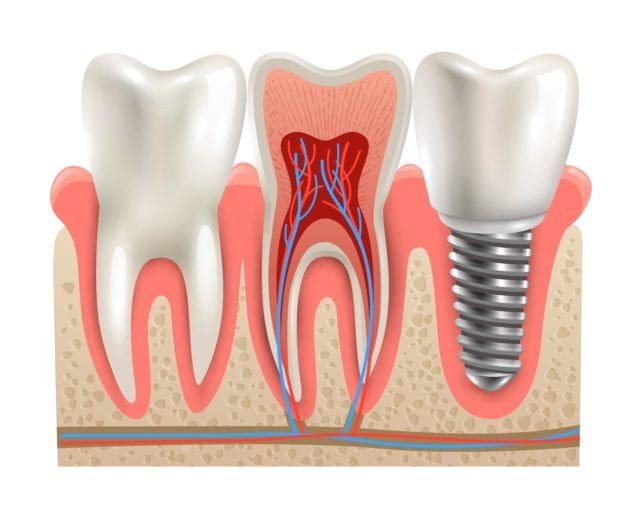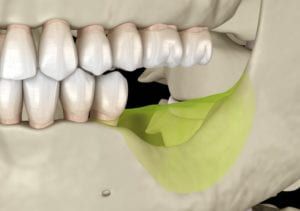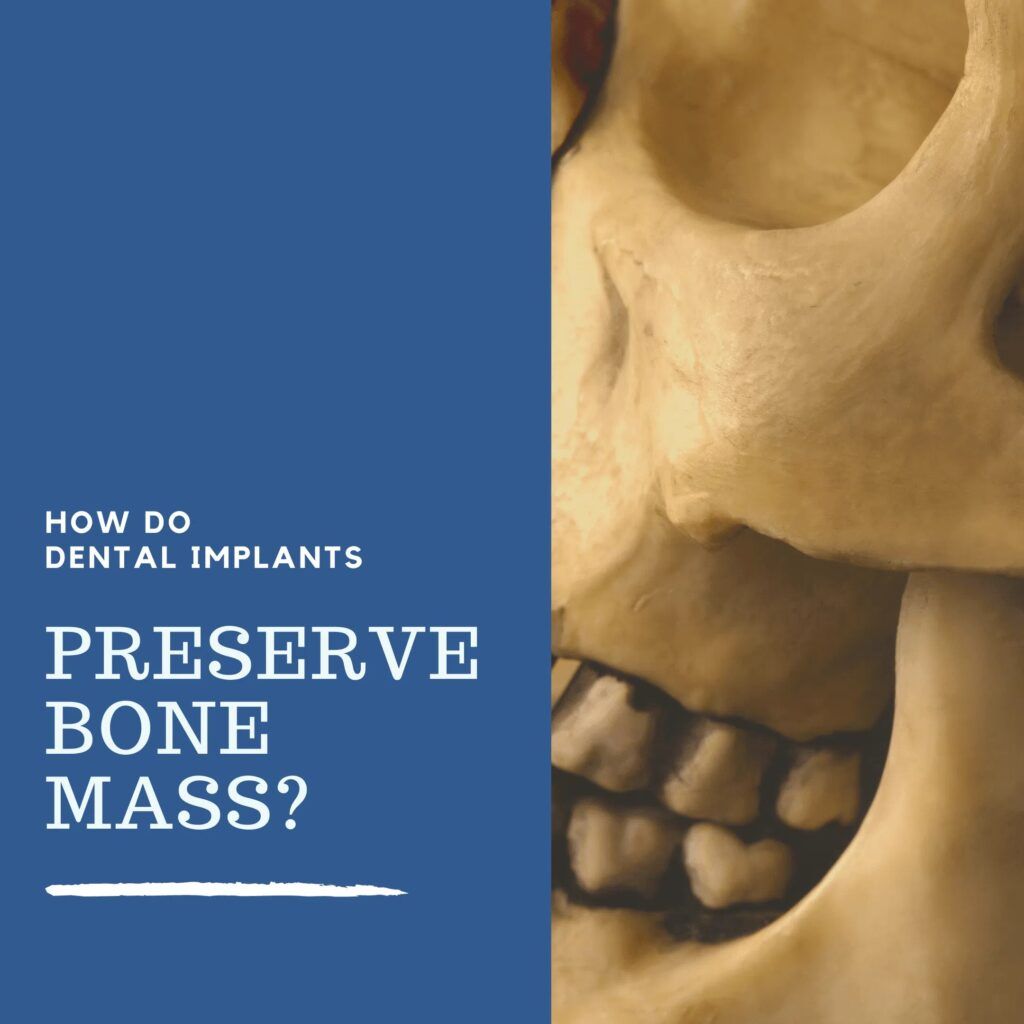Did you know that dental implants are the only tooth replacement option that comes close to restoring the function and appearance of natural teeth? In fact, dental implants are valued by many people because they last longer than other restorations, can restore almost all chewing function, do not damage easily, and look just like natural teeth. Yet, all these benefits don’t even compare to the benefit of preserving bone mass. The fact that dental implants can preserve bone mass is one of the main reasons why so many dentists recommend replacing missing teeth with dental implants.

If you are not familiar with dental implants, they are artificial tooth roots usually made from titanium. These artificial roots resemble a small screw and are surgically placed into the jawbone below the gums. As they heal, they fuse with the surrounding bone and become strong enough to support a dental prosthetic such as a crown, bridge, or denture. The final result is a tooth replacement option that looks and functions like a natural tooth.
In fact, the reason why dental implants are able to preserve bone mass is because of the fact that they function like natural teeth. A natural tooth is composed of the visible portion known as the crown and the portion that resides underneath the gums in the bone, known as the root. Both parts of a natural tooth are necessary to maintain the health of the underlying jaw bone.
This is because the force from biting or chewing provides necessary stimulation for the jawbone. However, the force of biting or chewing must pass through the crown into the root in order to be absorbed by the jawbone. The force associated with biting and chewing signals to the body that a certain amount of bone mass must be present to withstand this force.

When one or more teeth go missing the jawbone will not have the same amount of force being exerted, which will cause a process known as bone resorption. Bone resorption is when the body leeches bone mass from the jawbone and distributes it to other areas of the body. It happens because the lack of force signals to the body that the bone is no longer needed in this area. This ultimately results in jawbone deterioration that can cause tooth loss and changes in the facial structure. In most cases, bone resoprtion starts about six months after a tooth is lost.
If a dental implant is placed within the first six months of losing a tooth, then bone resorption is unlikely to occur. This is because dental implants mimic the function of natural tooth roots in order to provide the jawbone with necessary stimulation. Once dental implants have healed and fused with the surrounding bone, they can easily support a dental prosthetic. Overall this means that both components of a natural tooth are replicated with implant-retained prosthetics.
Other tooth replacement options, such as bridges and dentures, unfortunately do not have this ability. A dental bridge uses the remaining teeth on either side of the missing tooth to support a fake tooth, while a denture sits on top of the gums. Neither a traditional bridge or a denture is able to provide the necessary jawbone stimulation to prevent bone resorption.
For this reason, it is recommended to carefully consider dental implants when deciding upon a tooth replacement option. Only dental implants can preserve the health and structure of your jawbone by acting as artificial tooth roots that support a dental prosthetic. Unlike other tooth replacement options, dental implants maintain functions that are similar to those of natural teeth and are the closest you will get to your natural teeth.

